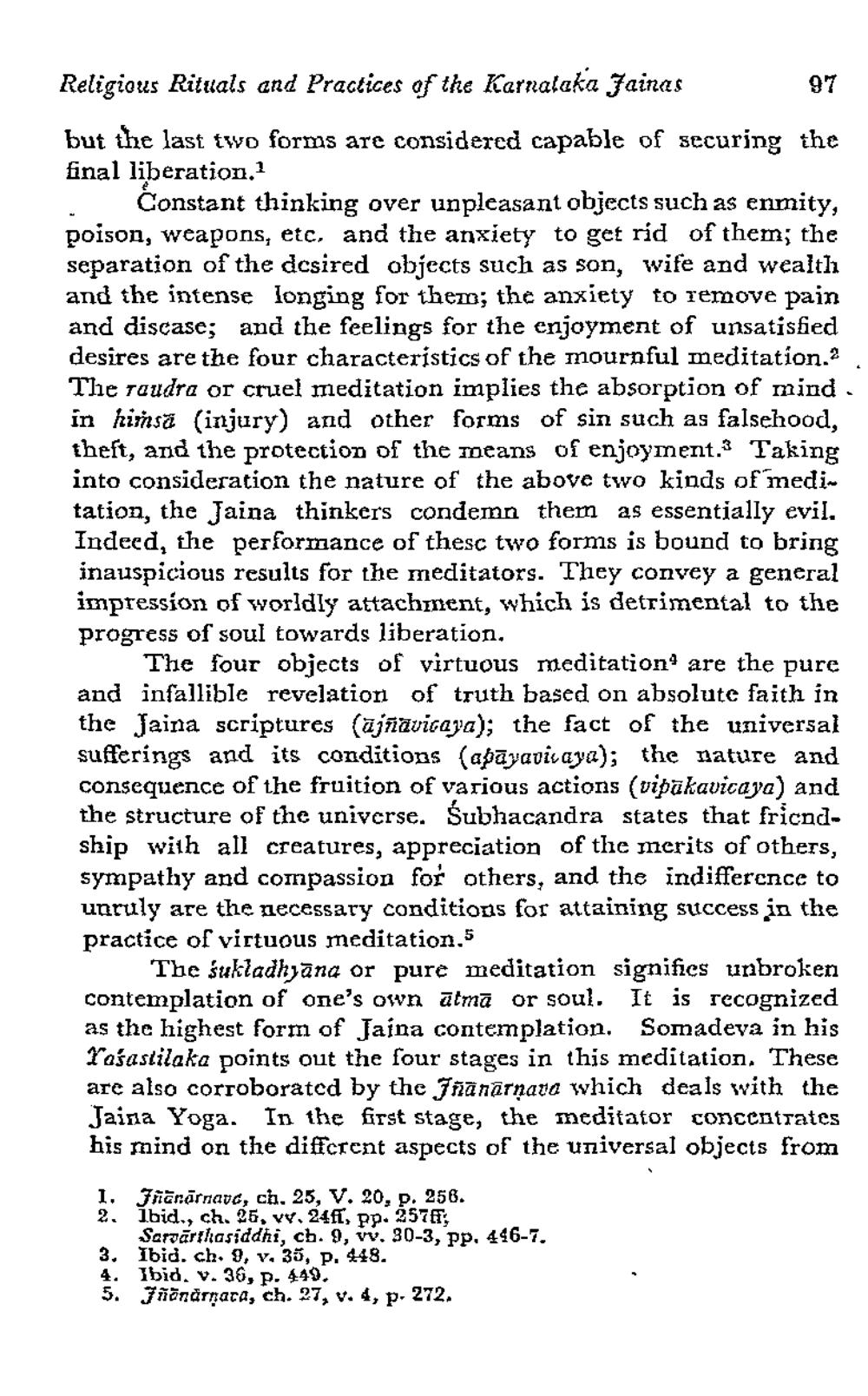________________
Religious Rituals and Practices of the Karnataka Jainas 97 but the last two forms are considered capable of securing the final liberation.
Constant thinking over unpleasant objects such as enmity, poison, weapons, etc. and the anxiety to get rid of them; the separation of the desired objects such as son, wife and wealth and the intense longing for them; the anxiety to remove pain and discase; and the feelings for the enjoyment of unsatisfied desires are the four characteristics of the mournful meditation. The raudra or cruel meditation implies the absorption of mind in hińsä (injury) and other forms of sin such as falsehood, theft, and the protection of the means of enjoyment.3 Taking into consideration the nature of the above two kinds of medi. tation, the Jaina thinker's condemn them as essentially evil. Indeed, the performance of thesc two forms is bound to bring inauspicious results for the meditators. They convey a general impression of worldly attachment, which is detrimental to the progress of soul towards liberation.
The four objects of virtuous meditation' are the pure and infallible revelation of truth based on absolute faith in the Jaina scriptures (ajsavicaja); the fact of the universal sufferings and its conditions (apāyavivaya); the nature and consequence of the fruition of various actions (vipakavicaya) and the structure of the universe. Subhacandra states that fricndship with all creatures, appreciation of the merits of others, sympathy and compassion fot others, and the indifference to unruly are the necessary conditions for attaining success in the practice of virtuous meditation.5
The sukladhyāna or pure meditation significs unbroken contemplation of one's own atmā or soul. It is recognized as the highest form of Jaina contemplation. Somadeva in his Yaśastilaka points out the four stages in this meditation. These are also corroborated by the Jnanarnava which deals with the Jaina Yoga. In the first stage, the meditator concentrates his mind on the diffcrent aspects of the universal objects from
1. Fränārnava, ch. 25, V. 20, p. 258. 2. Ibid., ch. 25, vv. 24f1, pp. 257ff:
Sarpárthasiddhi, ch. 9, vv. 30-3, PP. 446-7.
Ibid. ch, 9, v. 35, P. 448. 4. Ibid. v. 36, p. 449. 5. Jñonarnara, ch. 27, v. 4, p. 272.
W




